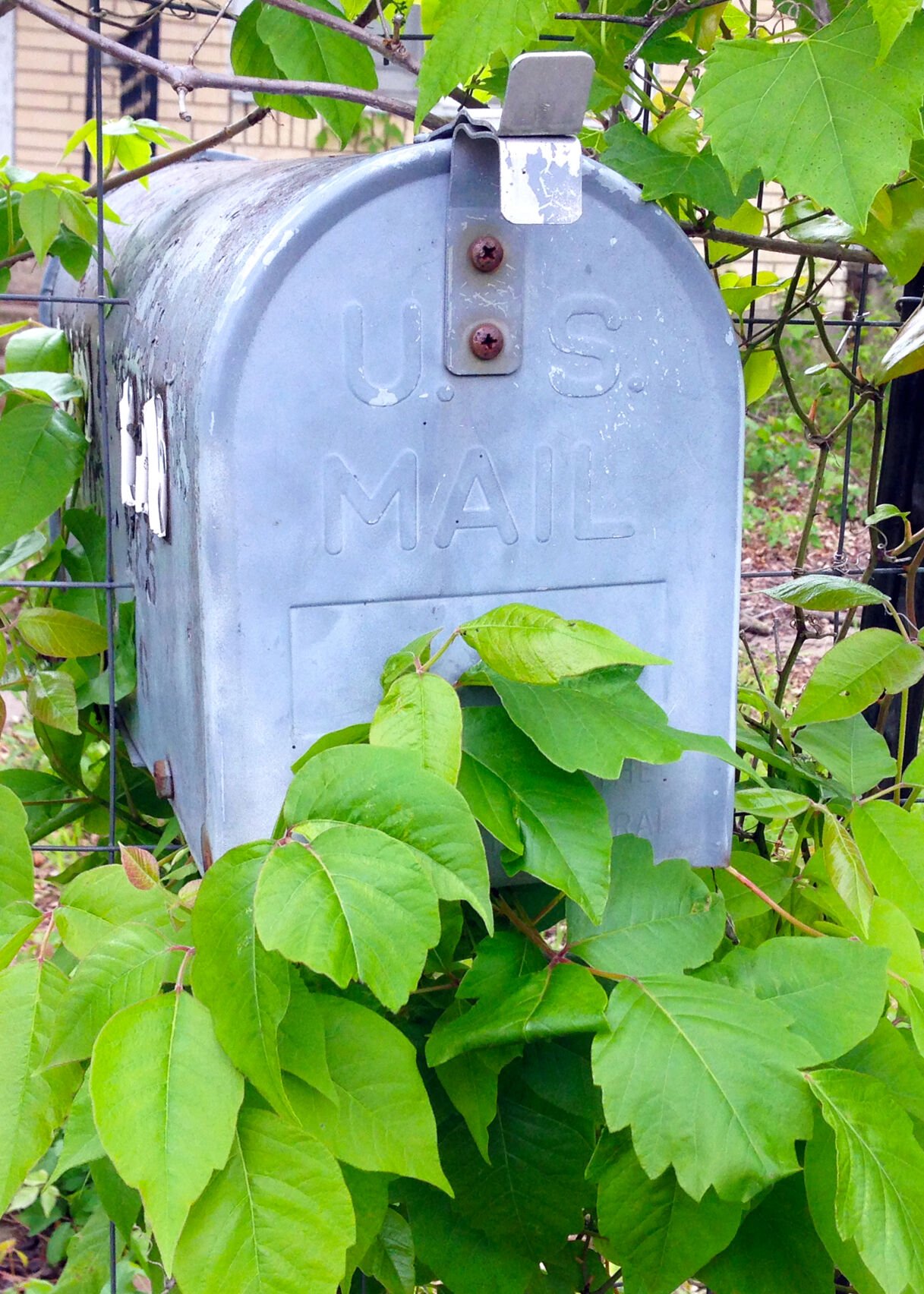Dear Neil: We have several acres covered with poison ivy. Unfortunately, the ivy keeps spreading. Store-bought remedies as well as homemade mixtures have not worked. Do you have any suggestions?
You need to use something labeled specifically for control of poison ivy. That probably will be a broadleafed weedkiller (containing 2,4-D and perhaps two other herbicides blended together). IĐÔĘӽ紫ý™ve used and recommended these products all my career and always with good outcomes if label directions are clearly followed. First and foremost, they work best on vigorous new growth. That means that youĐÔĘӽ紫ý™re just going into the prime treatment time.
Second, the best control will come if you coat the leaves thoroughly with fine droplets instead of a heavy spray that runs off onto the ground. Sometimes, on glossy-leafed plants, IĐÔĘӽ紫ý™ll recommend mixing one drop of liquid dishwashing detergent per gallon of spray to help it hold onto the leaf surfaces, but that usually isnĐÔĘӽ紫ý™t necessary with poison ivy.
My wife and I bought our current homestead 50 years ago. ItĐÔĘӽ紫ý™s a rural hillside on both sides of a creek. Large pecan and red oak trees cover probably 8 of the 11 acres. The remaining 3 acres were chest deep in poison ivy, honeysuckle, and smilax briars. It was a mess! The first thing I did, after we decided roughly where we wanted to build our house, was to hire a neighbor with a tractor and brush cutter to shred all the undergrowth. To my delight, almost none of the weedy vines came back after being cut to the ground. So that became Step One.
Step Two in our case was to cut all the poison ivy that was climbing any of our trees. I knew I couldnĐÔĘӽ紫ý™t spray up into the tree canopies because the herbicides would have harmed or killed the trees. I put on a long-sleeved shirt, cotton throw-away gloves, long pants, and boots. I used a long-handled axe, and I cut every ivy stalk near the ground line. (They can get as large as a manĐÔĘӽ紫ý™s arm.) I could have used a chain saw for this purpose, but the chunks of sawdust would have thrown oil all over me, plus itĐÔĘӽ紫ý™s more difficult to clean a chain saw of the poison ivy oil than it is to clean up an axe.
I made a second cut farther up on each trunk, then I used the head of the axe to pop the short section of stem out of the way. That allowed me clear access to the stump so that I could macerate it with the axe. I then poured the broadleafed weedkiller onto the pulverized stump surface at full strength so that it could soak into the wood and be carried down into the root system. That helped kill the roots to prevent resprouting and new growth.
I left the severed growth of the poison ivy up in the treesĐÔĘӽ紫ý™ canopies. I knew it would turn brown and be unsightly, but I also knew there was no way to cut or pull it out without a lot of close encounters with the stems and leaves of the still-oily plant tissues.
Since that time, for the ensuing 45 or more years I have used a garden hoe to eliminate any new poison ivy seedlings that have emerged, and IĐÔĘӽ紫ý™ve cut any additional woody stems that IĐÔĘӽ紫ý™ve discovered farther back into the woods.
And, from a completely different direction, you might even consider goats! YouĐÔĘӽ紫ý™ll see stories about cities ĐÔĘӽ紫ýśrentingĐÔĘӽ紫ýť herds of goats to clean up areas overrun with poison ivy, honeysuckle, briars, and other wild vegetation. They do a terrific job. Your local county Extension office would have an idea if anyone has such work crews available for rent.
Dear Neil: I have a splitleaf philodendron vine that has outgrown the pole itĐÔĘӽ紫ý™s on. I can find a taller pole, but IĐÔĘӽ紫ý™m wondering why its new leaves have fewer holes. TheyĐÔĘӽ紫ý™re not as large, and the plant isnĐÔĘӽ紫ý™t as interesting looking.
What you are seeing as the stem starts to hang downward is juvenile foliage. YouĐÔĘӽ紫ý™ll see the same phenomenon with our outdoor groundcover/vine English ivy. While itĐÔĘӽ紫ý™s growing horizontally its leaves are three-lobed and triangular. Once the stems start to attach to a tree trunk or the side of a wall or building, the new leaves are rounded and very different looking. A similar thing happens with devilĐÔĘӽ紫ý™s ivy (pothos). Its leaves get larger and larger as the plant climbs.
If your plant were mine, I would definitely repot it into a larger container. I would trim it to the height of the old support, but I would find a taller post so that its new growth could be encouraged to stay vertical. You could use the trimmings to propagate cuttings for new plants. Problems all solved.
Dear Neil: I have grown hoyas for years and IĐÔĘӽ紫ý™m always pleased when they bloom. However, IĐÔĘӽ紫ý™ve never had these yellow spots on them before. What is this, and what should I do? (I have them outdoors for the summer now. They are in the house all winter.)
These are aphids. Curiously, hoyas are in the milkweed family, and you will see this very same (or a very similar) aphid species all over wild milkweeds in vacant lots and farm fields. They have piercing/sucking mouthparts, and the main ĐÔĘӽ紫ýśdamageĐÔĘӽ紫ýť they do is to exude a sticky honeydew residue onto the leaf surfaces. From that a black sooty mold can develop on the honeydew. I see a faint start of it on several of the leaves in your photo. I would use a stream of water to wash the aphids off. You donĐÔĘӽ紫ý™t want to use so much pressure that you damage the flowers, of course, so if the water treatment doesnĐÔĘӽ紫ý™t work, you should use an inorganic or organic insecticide thatĐÔĘӽ紫ý™s labeled for control of aphids. In the meantime, you can also use a soft rag and soapy water to clean the mold off the waxy leaves.

























